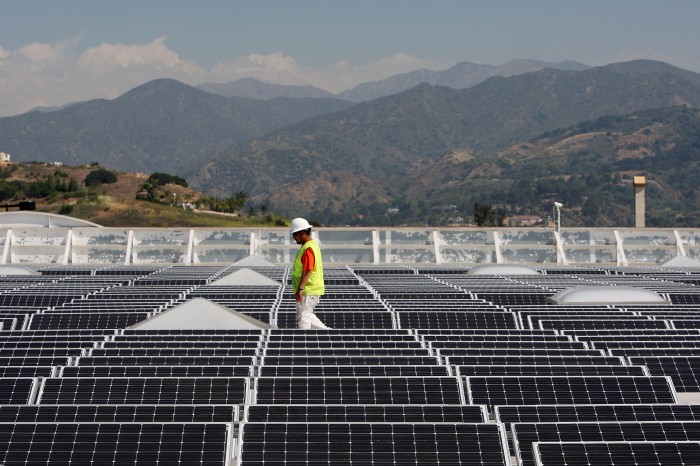Can We Really Retrain Coal Workers for Jobs in Solar?
Over the next 15 years, the U.S. solar industry could “easily absorb” all of the layoffs occurring in the country’s waning coal industry.
That’s according to a new study by Joshua Pearce of Michigan Technical University and colleagues. The burgeoning solar industry already employs about 50,000 more workers than coal mining and power generation—200,000 in solar against 150,000 for coal—and the two sectors are headed in opposite directions. That will generate lots of opportunity for coal workers to find new employment in solar, the researchers argue.
Pearce’s team wanted to know how much it might cost to retrain coal workers for jobs in the solar industry. They included everyone from janitors at coal-fired power plants (who they supposed could be trained to take on assembly jobs at solar plants) to miners to structural engineers. Given the cost of training programs, which can run from a single course to a full four-year degree, they suggest the total bill might be anywhere between $180 million and $1.8 billion.

That sounds pretty affordable, actually, for retraining such a large workforce. President Obama has, as part of his Power Plus Plan, already put $75 million on the table for retraining coal workers. And the Solar Training Network aims to help train 75,000 people for solar jobs by 2020, though that is not limited to retraining programs, or to helping coal workers specifically.
But retraining workers for new industries may be more difficult than it at first appears. As we wrote in a recent piece:
A 2008 Department of Labor study that looked at retraining programs involving 160,000 laid-off workers in 12 states concluded, “It appears possible that ultimate gains from participation are small or nonexistent.” A more recent study from the Hamilton Project found that to be successful, retraining programs must be highly targeted at the workers most likely to benefit. In general, that means younger workers with some postsecondary education who are motivated to follow through, and who are able and willing to relocate to places with more job opportunities. Many of the unemployed coal miners of Appalachia do not fit those criteria.
And as this analysis in Vox points out, the bulk of the solar industry is currently concentrated in California, far from areas where most coal workers live. Solar companies are unlikely to pull up stakes and move their businesses to Appalachia—and, on the flipside, people don’t simply migrate en masse to wherever jobs happen to be.
There are other issues as well. In some parts of the U.S., for example, there is already a glut of solar power. The more solar (or wind, or any other power source) is installed, the less valuable it becomes per unit of energy—an economic problem that places a ceiling on how much the solar industry can grow, unless transmission lines are upgraded so that power can be shipped to where it’s most needed.
Of course, not all coal workers need to stay in the energy business. There are plenty of other fast-growing industries hurting for trained workers. Millions of dollars in federal funding are already going toward training former coal workers to become computer programmers, for example. Such jobs have the benefit of being much more mobile. And unlike solar, which will always face competition for market share from many other kinds of power, the demand for coders is likely to remain steady for a long time to come.
(Read more: Harvard Business Review, Vox, Backchannel, “Can We Help the Losers in Climate Change?”)
Keep Reading
Most Popular
Large language models can do jaw-dropping things. But nobody knows exactly why.
And that's a problem. Figuring it out is one of the biggest scientific puzzles of our time and a crucial step towards controlling more powerful future models.
How scientists traced a mysterious covid case back to six toilets
When wastewater surveillance turns into a hunt for a single infected individual, the ethics get tricky.
The problem with plug-in hybrids? Their drivers.
Plug-in hybrids are often sold as a transition to EVs, but new data from Europe shows we’re still underestimating the emissions they produce.
Stay connected
Get the latest updates from
MIT Technology Review
Discover special offers, top stories, upcoming events, and more.